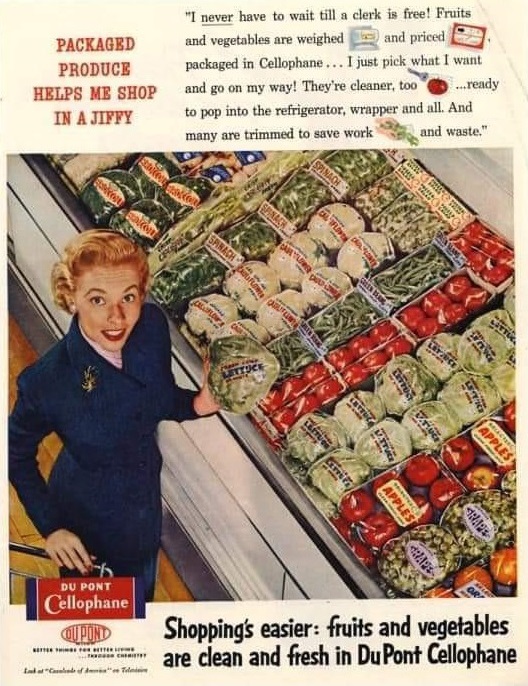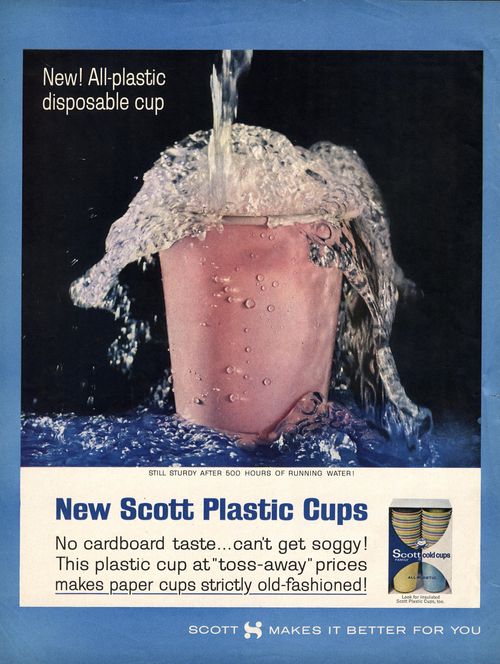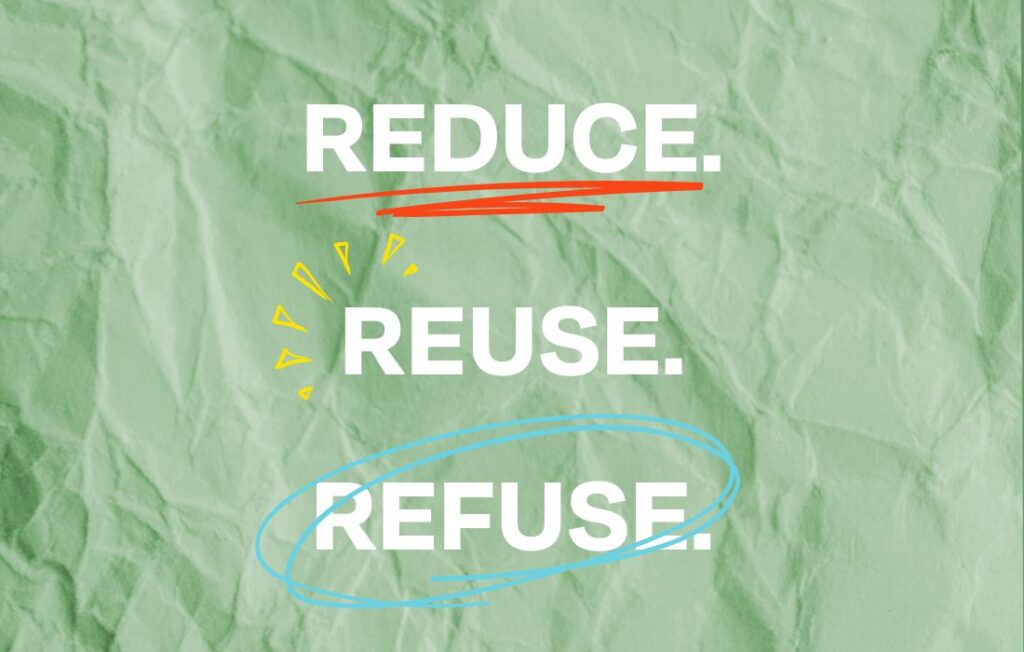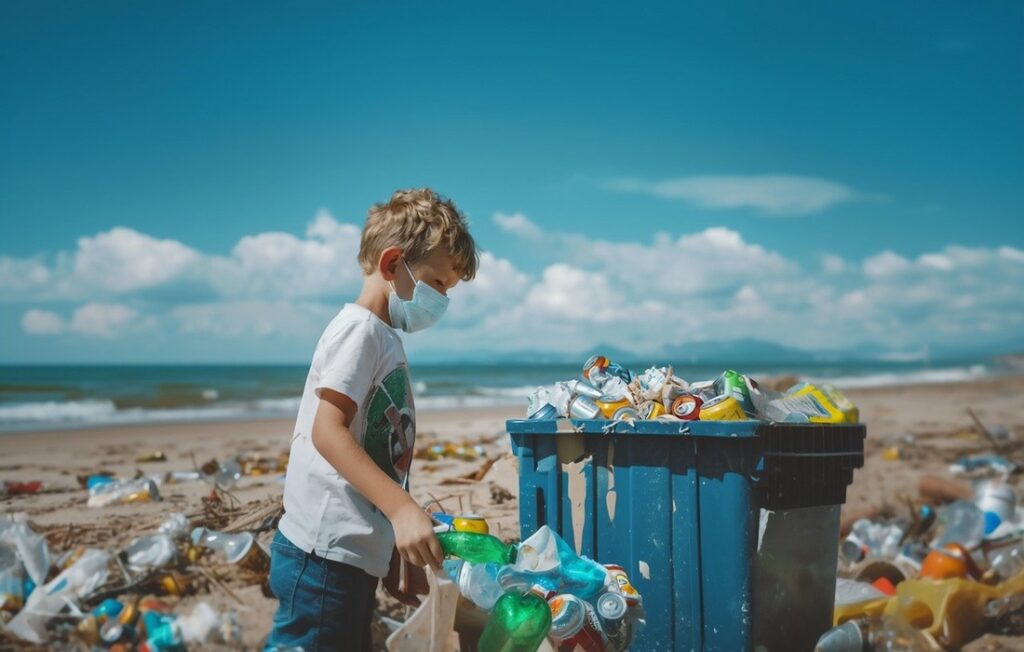If wishes were fishes, they’d be swimming in plastic.
Since 1970, the amount of plastic humans have created and disposed of has skyrocketed. Now we’re finding plastics and plastic particles on our beaches, atop mountains, in our water, and now in our bodies. Given the number of new plastics created every year (approximately 380 million tons) and the average decomposition rate of plastics (20 – 500 years conservatively), this problem will not subside without significant, rapid intervention.
But it wasn’t always this way.
In the early 20th century, plastics were considered valuable and worth conserving. This was before oil corporations (frequently referred to as “Big Oil”) introduced the concept of “disposable plastic” in 1959, forever changing the world’s approach to plastic and kickstarting the catastrophic flood of plastic waste that we see today.
From the beginning, oil and fossil fuel corporations toted recycling as an environmental solution for plastics, despite knowing that recycling was never—and would likely never be—commercially and scientifically viable to address the rate at which plastics were being produced and discarded. Instead, over several decades, they doubled and then tripled down on the recycling “solution” in an attempt to dissuade public pressure and calls for increased plastic regulations. But more on that in a minute. First, let’s get some basic facts out of the way.
“The amount of plastic on our planet—it’s like one big oil spill.”
Katrina Knauer, National Renewable Energy Laboratory
The Truth About Plastic
By now, you’ve likely heard that plastics are no good for our environment, and it’s true. In addition to breaking down extremely slowly, the truth is that they never really disappear—they just become tiny particles that make their way into every ecosystem on earth. Not great.
To give you an even better understanding of plastics and our planet’s current plastic crisis, here are some rapid-fire facts:
- Plastics are man-made materials created from oil and gas (petroleum, a.k.a. petrochemicals). Yes, plastics are directly tied to the fossil fuel industry.
- Only 9% of plastic globally is ever recycled. This number is even lower in the United States, hovering between 5% and 6%.
- Recycling plastics is more expensive for corporations than simply producing new plastics from scratch.
- 20 petrochemical (a.k.a. fossil fuel) companies produce more than half of all single-use plastics in the world.
- Not all plastics can be recycled, and those that can degrade significantly every time they’re put through the recycling process, so they can only be recycled one to two times on average.
- When we talk about “plastic,” we should really be talking about “plastics” plural. That’s because the term “plastic” actually represents several different but related synthetic polymers—sometimes in combination with one another. (By intentionally lumping these together as one single product, “plastic,” oil and petrochemical companies have been able to sell plastic as a more universally understood product and, by extension, sell recycling as a solution to this product despite it not being an option for many of the polymer types.)



The Evolution of the Recycling Myth – A Timeline
Don’t get us wrong, recycling has real environmental benefits, and it’s a solution we should be using to reduce human waste in general, but it is ABSOLUTELY NOT the total-fix plastic solution that’s been sold to us for more than half a century. Not even close.
So, how did we get here? How has the recycling myth evolved over time to become what it is today: a facade?
Let’s break it down.
1950's
Prior to this decade, plastic was largely sold to consumers as something that was valuable and reusable. However, in 1959 when thin dry cleaning bags led to dozens of child deaths, plastic manufacturers responded by claiming these plastic bags were designed to be disposable (a concept that was new for the time and attempted to steer blame away from the product manufacturers). The boom in plastic consumption that followed in the 1960s demonstrated to corporations that disposable plastic was much better for their bottom line as the demand for new plastics increased significantly.
1970's
The visibility of plastic waste began to become an issue. People were seeing plastics show up in their trash cans more and more, and this began to be more widely recognized as an environmental issue—one that was doing harm to the beauty of nature. To steer the narrative away from calls for plastic regulations, Big Oil and Gas focused on two main “solutions” for their plastic waste: landfilling and waste-to-energy. In both cases, the emphasis was placed on removing the plastic from site, either from burying it or burning it. Neither is sustainable, low-carbon, or environmentally friendly. Unsurprisingly, neither “solution” gained much traction with the public, and this would become a problem that would resurface (no pun intended) again and again.
1980's
In a new attempt to change public opinion on plastics, the big push for recycling officially begins! And yet, as previously mentioned, petrochemical companies already knew the full limitations of recycling. As the founding director of the Vinyl Institute (a spinoff of the larger organization, Society of the Plastic Industry, which was a supporting arm of the plastics industry) said in a 1989 speech to industry insiders, “Recycling cannot go on indefinitely, and does not solve the solid waste problem.” How did he know this? A 1986 report from the Vinyl Institute also concluded that, “recycling cannot be considered a permanent solid waste solution, as it merely prolongs the time until an item is disposed of.”
1990's
The plastics industry triples down on recycling! As, once again, calls for increased restrictions and regulations began to circle the plastic industry, Big Oil and petrochemical companies began to lean on trade associations to spread the message: mechanical recycling is the solution. And, thus, the 90s became a time for plastics greenwashing as various funds and foundations were created by leading corporations throughout the fossil fuel industry to push the “positives” of plastics as well as their “sustainable recycling solution.” These foundations were often given misleading names, such as the Council on Packaging in the Environment (COPE) and the Center for Plastics Recycling Research (CPRR).
The Resin Identification Codes, which were created by the Society of the Plastics Industry, became more widespread in the 90s, conflating the already well-known chasing arrows symbol associated with recycling with plastic polymers—even those that cannot be recycled. Written and visual materials—including educational materials sent to schools—would show recyclable plastic products side-by-side with non-recyclable plastic products, confusing the consumer and muddying the water about how much plastic can really be recycled.
The unspoken truth? Recycling is in direct competition with petrochemical companies and plastic manufacturers; if recycling succeeds, they lose profits, so there is no motivation for them to make recycling work efficiently—or even at all.
2000's & 2010's
The plastic industry’s campaign was a success and the public had largely bought into the concept of recycling by this time. As a result, plastic manufacturers slowly began to walk away from their recycling and waste commitments. No one was holding them to it, after all.
Today
For years, plastic manufacturers, petrochemical companies, and various arms of Big Oil have been facing lawsuit after lawsuit for their actions and inactions where plastic pollution is concerned. Most recently, these groups have adopted the term “advanced recycling” in an attempt to breathe new life into recycling as the ultimate plastic solution, implying new innovations to the same technology that has existed—and been largely ineffective—for years.

What Actual Solutions Exist for Plastic?
So where do we go from here? Recycling aside, what solutions really do exist to address the mountain of plastic we’re facing today?
The answer is simple-yet-challenging answer: refuse.
It’s the silent last word in the popular saying, “Reduce, Reuse, Recycle,” and yet it’s the one we need to be screaming from the rooftops. It’s time to start refusing plastic. Decreasing plastic demand, significantly increasing plastic and fossil fuel industry regulations, and spreading the word about recycling myths are all necessary to make positive change.
How can you get started?
- Start by looking around your home and identifying plastic-free swaps you can make on a regular basis. (For example, as old plastic kitchen utensils and Tupperware begin to wear out, consider swapping them with metal and glass alternatives.)
- Use your voice. Reach out to your local representatives (a lot of impact can occur at the municipal level!) and ask about what is being done to address plastic pollution where you live. Perhaps suggest plastic-alternative programs (such as swapping out plastic grocery bags with reusables) that can be implemented at the local level. At the state and federal levels, contact your representatives and tell them you do not want them to support any initiatives that incentivize plastic manufacturers.
- Educate others. Helping everyone understand the truth from the well-established myths when it comes to plastic and plastic waste is going to be critical for us as a global community to take a positive step forward—a step away from a world filled to the brim with plastic. (Start by sharing this article!)




